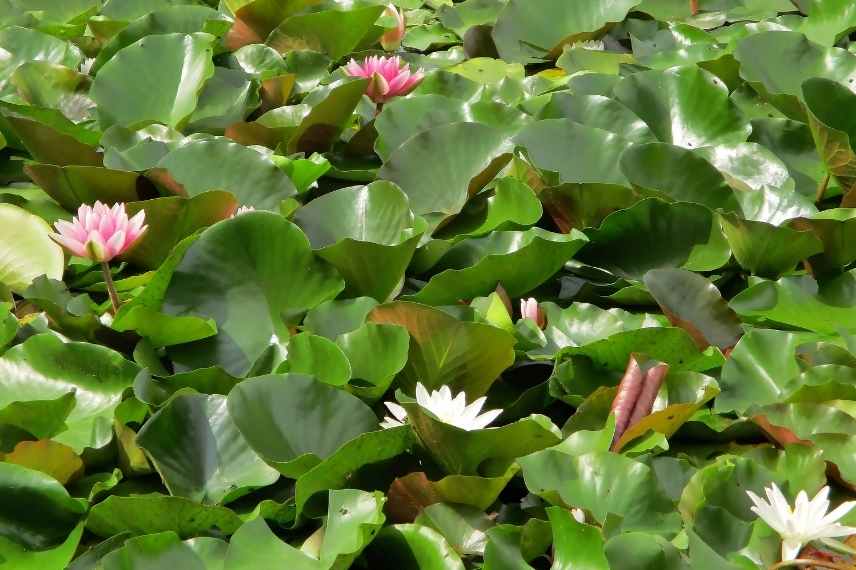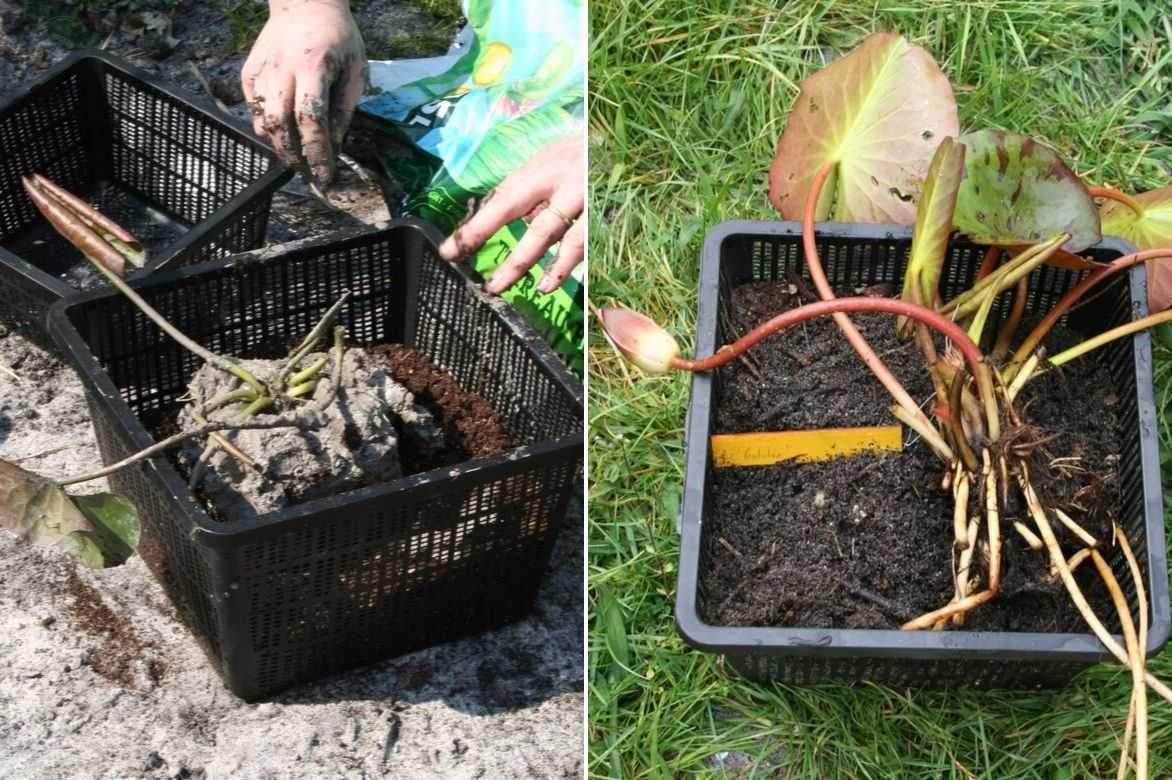The water lily is an aquatic perennial, most often hardy, appreciated for its beautiful and large flowers and the natural look its floating leaves give to ponds. After a few years, it's time to divide the mother plant to give it a lighter appearance, stimulate flowering, and replace the pot damaged by its powerful roots. Discover our tips for successfully propagating your water lily.
Why Divide the Water Lily?
Placed in good conditions, the water lily is a vigorous perennial plant and can grow to significant proportions. Over time, the foliage covers too much of the water's surface, creating an imbalance. Additionally, the water lily tends to flower less as it ages. The less space it has in its underwater basket, the fewer flowers it produces. Division helps rejuvenate it.
To learn more, check out our complete guide: Nymphea, Water Lily: Planting and Care.
When to Divide a Water Lily?
Water lilies are often divided when they occupy more than 30% of the pond's surface. Generally, division is done every 3 to 4 years:
- at the very beginning of spring (before flowering);
- or in autumn.
Avoid dividing the water lily when it is in full growth to prevent weakening it.

When the leaves overlap on the water's surface, dividing the stumps becomes necessary!
How to Divide a Water Lily?
Required Equipment
Gather the following:
- A pair of waders or boots
- A sharp knife, possibly a pruning shear
- A pair of water-repellent gardening gloves
- Special aquatic plant compost
- Gravel, pebbles, pumice, or slate tiles
- A large aquatic plant basket
The Division Process
- Start by removing the water lily from the water. This operation can be tricky due to the weight of the plant and may require assistance.
- Cut away any dead or rotting parts of the plant (leaves, stems, etc.). These are often brown in colour.
- If your water lily is in a perforated basket, trim any roots protruding from the holes to extract the plant with its root ball. Sometimes, the basket may need to be cut if it's deformed by root pressure, especially if no division has been done for a long time. In this case, use pruning shears.
- Once the plant is freed from its container, rinse it with water to reveal the rootstock.
- Using the knife, cut secondary rootstock sections into pieces at least 10 cm long. Each fragment should include a terminal bud from which future leaves will emerge, along with a few well-developed roots. Make clean cuts with a knife or Japanese saw.
- You should end up with several divisions ready for replanting.

Dividing a water lily and planting it in a basket
How to Transplant a Water Lily?
- Prepare a new basket. I recommend choosing a large basket from the start, ideally with a minimum volume of 10 to 15 litres, as water lily rootstocks grow quickly!
- Fill it with aquatic plant compost (garden soil is also suitable if it's clayey).
- Plant your division at an angle, ensuring you never bury the buds or the beginnings of new leaves (only one division per basket!).
- Cover the basket's surface with mulch such as slate, gravel, or pumice to prevent fish from dislodging your water lilies and muddying the water. This also helps stabilise the plant until it's firmly rooted.
- Slowly submerge the basket containing the new water lily until no more bubbles rise to the surface. The new location should be sunny (full sun for abundant flowering) and in calm water. Place it at the appropriate depth for the variety: 40 to 50 cm for a dwarf water lily and 1 metre for a large-growing water lily.
Water lilies are greedy perennial plants, so you can embed a few tablets or pellets of organic aquatic plant fertiliser into the substrate.
































Comments